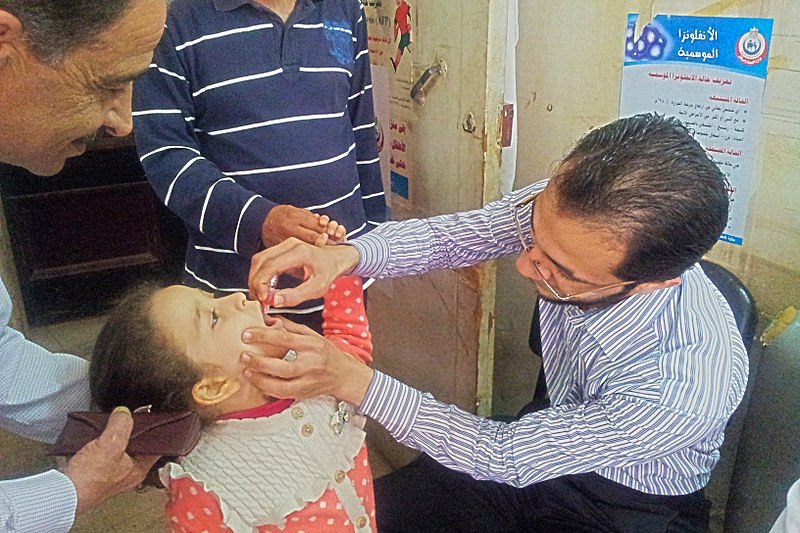
“I want to go back to my old body. I can't even see myself!” The woman in the Al-Sabtia clinic cries to the doctor. “Is this the way a woman with three kids is supposed to look?” Her body is obscured by her traditional black abaya, but she is far from too skinny.
This patient's attitude is not uncommon among Egyptian women today, who prefer to be overweight. Obesity is a complex and dangerous issue, but social pressure, along with a lack of education and an increasing poverty rate, are just some of the many reasons why there is such a high prevalence of obesity among Egyptian women.
“Egypt is suffering from one of the highest obesity rates in the world, and the prevalence is still increasing in women,” says Dr. Zeinab Bakry, a pediatrician and the Director of the National Nutrition Institute.
The obesity rate among women is twice as much as men; about 40 percent of women aged 15-59 are clinically obese, in comparison to 18 percent of men. In addition, the prevalence of obesity among Egyptian women is higher than women in the Middle East region, according to the World Health Organization, which defines obesity as a Body Mass Index (BMI) of 30kg/m2 or higher.
Obesity poses serious health risks including diabetes, hypertension, atherosclerosis, orthopedic problems, and cardiac problems.
As far as why more Egyptian women are clinically obese than their counterparts in the rest of the Middle East, Dr. Bakry explains that “poverty is the underlying cause. Egypt, in the past, did not have the same high rates of obesity as it does now. The economic status of the people as a whole has decreased.” The answer, experts stress, is education.
Doctors in more traditional and working class communities, such as the one in which Dr. Mohsen Khalil practices, find themselves battling with patients over their weight because of an “old way of thinking.” What the medical community commonly accepts as an ideal weight for a woman, certain communities consider too thin and more susceptible to illness, says Dr. Khalil.
“Here she feels ashamed if she is too thin. Medically, she could need to lose weight, but she might refuse and say that she wants to gain weight because she wants to get married,” Dr. Khalil explains. “It is anazra, an image that comes from old tradition. Men see their fathers with overweight women, and they think that she 'fills the eye,' or satisfies them.”
This mindset originated long ago in the rural areas of Egypt, explains Dr. Khalil, where if a woman was overweight, it meant her parents fed her well and she came from a good family, whereas a thin daughter meant the family couldn't find enough to feed her.
While the mindset may have come from rural locales, metropolitan areas statistically have the highest levels of overweight and obese women, followed by canal and coastal regions, while Upper Egypt, which is largely rural, has the lowest prevalence, according to National Nutrition Institute research. The World Health Organization reported 45 percent of urban women are obese, compared to 35 percent in rural areas.
“In rural areas you have green space and you have a place to walk, to be active, which is completely different than urban areas. Here, if you try to walk in the street, there is no room.” explains Dr. Bakry. “Women in rural areas work all day, tending to sheep, cattle, farms, making bread at home, and walking long distances.”
Even among those who desire to be a healthy weight, there are many different constraints depending on their lifestyle.
“City life is completely different. A woman may sit in an office all day, and buys ready-made food because she has no time to cook, or she might cook quickly –– using mostly carbohydrates.” Dr. Bakry explains that city-dwelling women who stay at home are at risk because they may not leave the house often.
Married life also has a large impact on the rates of obesity among women. “Before marriage, you can find that the girl is very thin … when you see her four or five years after marriage you find another woman completely –– you will find an obese lady,” says Dr. Bakry. Multiple pregnancies are a large factor in this sudden transition.
“They have specific beliefs: they have to eat a lot of food during pregnancy, and even more while breastfeeding. When she finishes nursing after 1.5 to two years, she gets pregnant again.” Dr. Bakry adds. “There is no space between each child to regain her original weight, and this is so frequent in our culture.”
Due to the variation between metropolitan and rural obesity rates, more is at play than just social and traditional perceptions of health. Urbanization may play a role, while both Dr. Khalil and Dr. Bakry agree that socioeconomic factors such as poverty and a lack of education drive what Dr. Bakry calls the “vicious cycle” of increasing obesity.
It is important to know that health issues, such as obesity, affect those across the entire socio-economic spectrum in different ways. Dr. Khalil says that health education for both sexes is necessary across Egypt, beginning at a young age. The obesity epidemic is growing and tightening the belt on a weak educational system is the most accessible solution we have.




